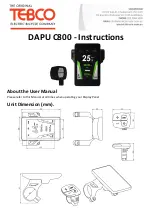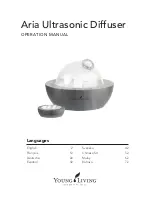
CCS120
Commissioning
Hauser
17
Requirements
The sensor reading is stable (no drifts or unsteady values for at least 5 minutes). This is normally
fulfilled, when:
• The polarisation period is finished.
• The flow is constant and within the correct range.
• The sample medium and the sensor are at the same temperature.
• The pH value is within the admissible range.
Zero point calibration
Zero point calibration is only necessary when the sensor is used at the lower limit of the
measuring range.
For zero point calibration, perform the following steps:
1.
Remove the sensor from the assembly (see operating instructions of the assembly).
2.
Clean the sensor thoroughly. The sensor must be totally free of chlorine for the next
working step.
3.
Stir the sensor in a container filled with clean water (free of chlorine and bromine) until
the measured value remains stable.
4.
Adjust the transmitter to zero according to it operating instructions.
5.
Reinstall the sensor into the assembly (see operating instructions of the assembly).
Slope calibration
For slope calibration, perform the following steps:
1.
Insert the sensor into the assembly, if not already done (see operating instructions of the
assembly).
2.
Take a sample for DPD measurement. Sampling location has to be close to the installed
sensor. Use the sampling tap in the case of the compact chlorine system CCE1.
3.
Determine the total chlorine content with a photometer (e.g. CCM182, see accessories)
according to the DPD 1 / DPD 3 method. See the operating instructions of the
photometer. Alternatively you can use the DPD 4 methode.
4.
Enter the measured value into the transmitter (see operating instructions of the
transmitter).
5.
After initial installation of the sensor, check the calibration by DPD measurement 24 hours
later.
The following calibration intervals are recommended:
• Drinking, industrial, process and cooling water: depending on the specific conditions
(1 - 4 weeks)
• Swimming pools: weekly
• Whirlpools: daily
!
Note!
Carry out a slope calibration every time the membrane or electrolyte is changed.












































